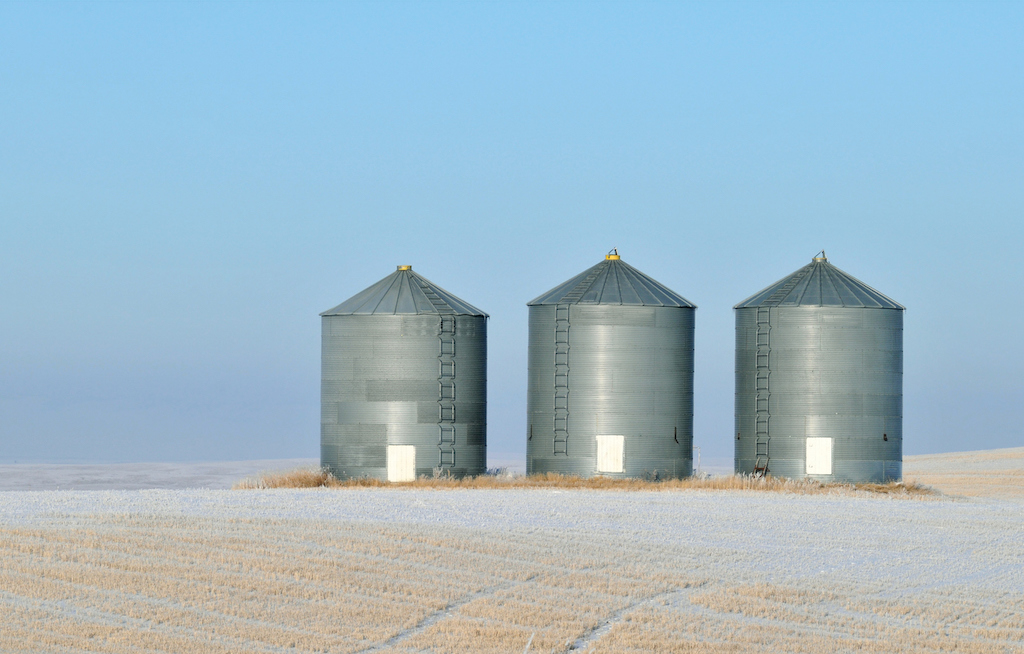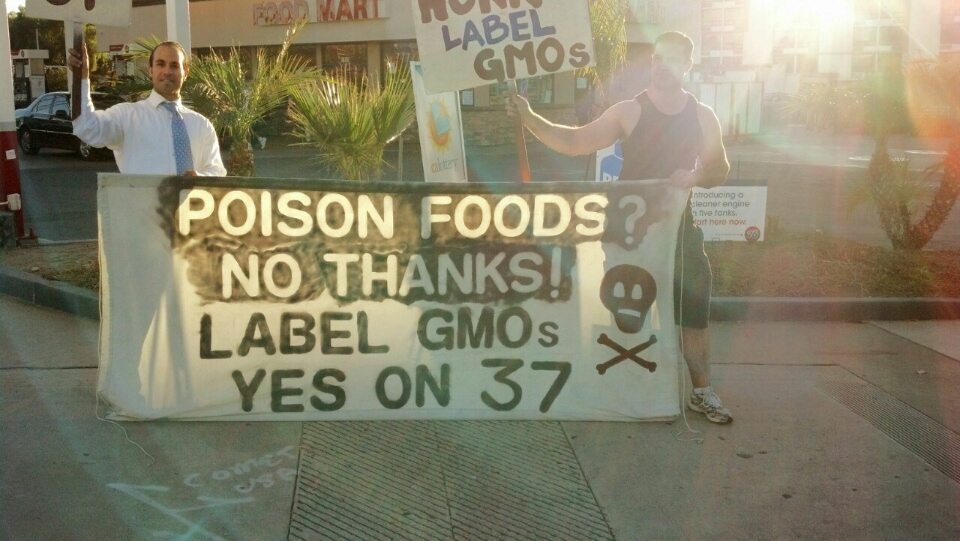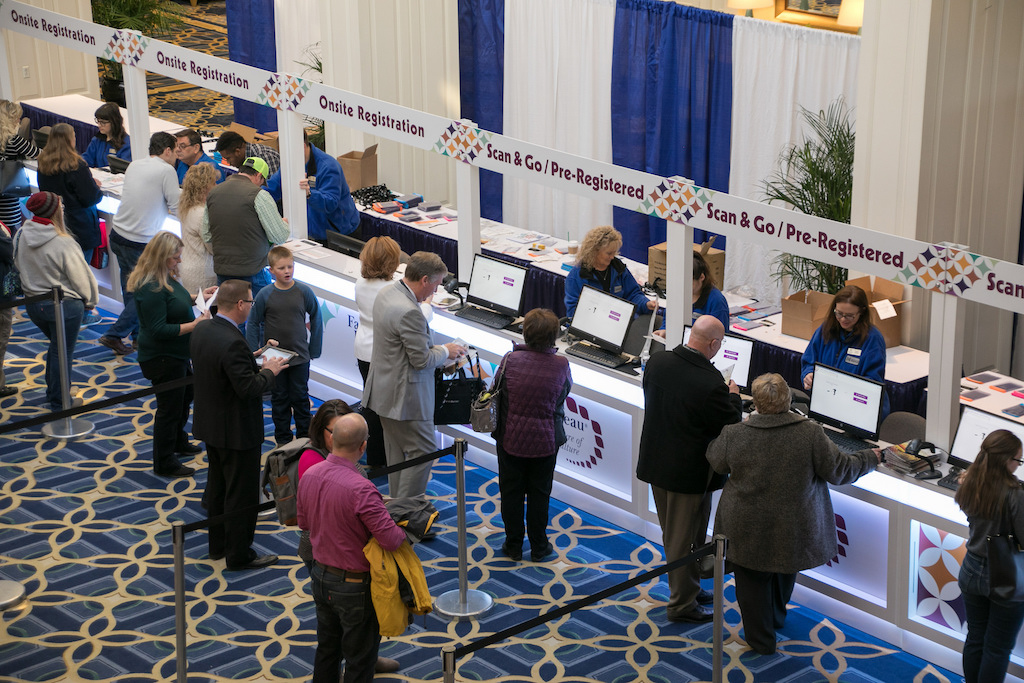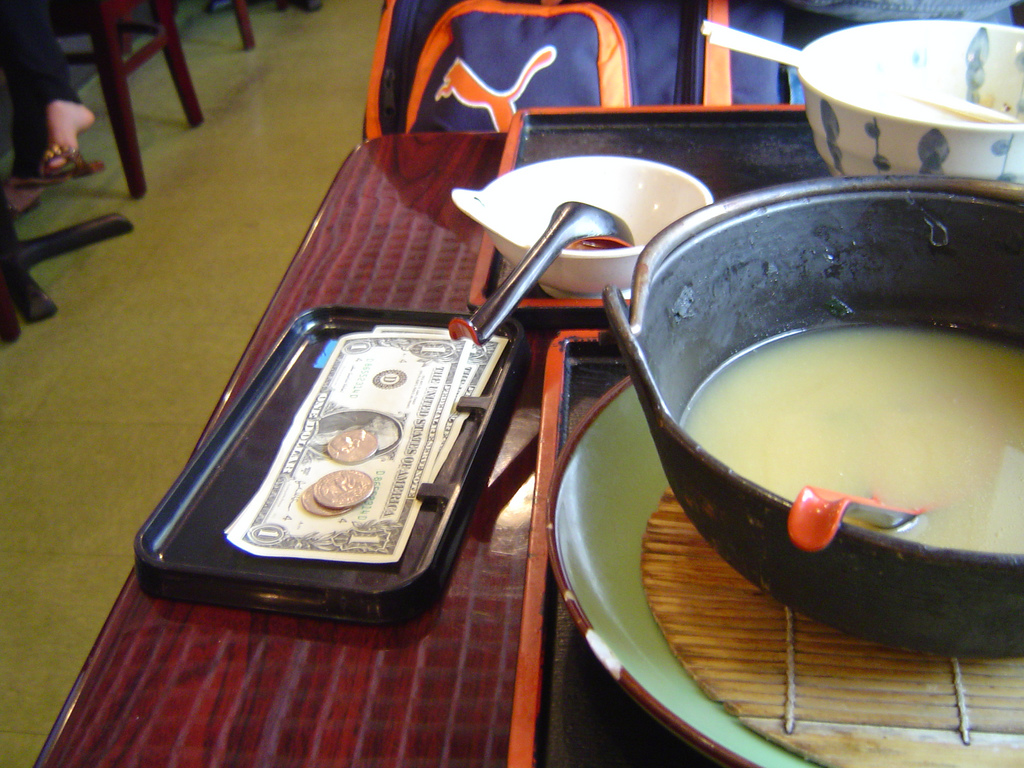
brytta/iStock
This month, CNBC published its Top 50 Disruptors List, a guide to the new generation of not-yet-public companies vying to change the way the world does business. Among them are some of the world’s most recognizable and talked-about startups: Airbnb, the wildly popular room-for-rent platform; The We Company, parent to the burgeoning network of WeWork coworking spaces; and Impossible Foods, the buzzy alternative protein company likely headed towards an eagerly awaited I.P.O. later this year.
But the number-one spot went to a brand that’s not yet a household name: Indigo Agriculture. It’s not immediately obvious why. The company sports some impressive fundamentals including $650 million in funding, a reported value of over $3.5 billion, and 750 employees across the world—but, as described by CNBC, its business model sounds uninspired and fuzzy. Indigo uses “natural microbiology and tech to improve sustainability, profits for growers, and, of course, consumer health” with the help from “a digital platform that allows growers and buyers to electronically connect with each other.” What does that mean, exactly? And how to reconcile that middling pitch with Indigo’s leading spot on the list?
Yes, Indigo’s business model is hard to parse quickly. Yet it’s also true that the company may represent a profound shift in the way food is grown, distributed, and sold—one that could prove as transformative for agriculture as Netflix has been for the movie business, or Airbnb has been for lodging. And since food is so much more integral than films and hotel rooms, Indigo’s impact could be truly planet-shaping. Understanding why just requires a little context.
? ? ?
Indigo was founded not by agricultural scientists but disruption specialists—business leaders who see the disturbance of existing markets as their path to profit. It is just one of over 100 ventures to originate at Flagship Pioneering, a biotech and pharmaceuticals startup machine that has generated over $30 billion in aggregate market value since 2000. The project began in 2014 and, in January 2015, Flagship tapped David Perry, a veteran CEO of the pharmaceutical industry, to lead the company.
Indigo began as a microbiology firm hawking microbially treated seeds, which research suggests can improve yield with fewer chemical inputs. But the Flagship scientists quickly realized that agriculture was ripe for a data coup, and Indigo’s scope became much bigger. Since then, Indigo has launched ventures that sprawl across the supply chain and the globe. As of right now, it manufactures seed treatments, incubates dozens of precision ag technologies, brokers billions of dollars of commodities, and is investing in storage, logistics, and more. The idea is now not just to sell a profitable alternative within the existing system, but to disrupt agriculture as we know it.
Today, the word “disruption” tends to denote the transition of a given sector from the analog, industrial economy to the digital. But agriculture—a top five global industry, by some estimates worth $5 trillion—has so far escaped digital reinvention. While digitally enabled tech has helped agricultural machinery become more powerful and precise, the sector is not fundamentally different today than it was a century ago. Farmers are forced to squeeze as much profit as they can out of a piece of land between rising costs and falling prices on the global marketplace—where each crop variety carries the same price, regardless of where it was grown. The system depends on the assumption that a bushel of corn, soy, wheat, or rice is as generic as a barrel of crude oil, whether harvested in India, Kansas, Australia, or Argentina.
A commodity’s anonymity, and the mystery of its path from field to factory, are key to the “business” of agribusiness. Since the Industrial Revolution, the real money has been made by corporations who control the infrastructure necessary to centralize, transport, and process raw product from millions of farms around the world: rail and shipping networks, grain storage elevators, mills, processing plants, and storage warehouses. Under this system, crops themselves remain generic and undifferentiated—a bushel of soy is a bushel of soy. The value, supposedly, added mostly by the middlemen.
This is the system Indigo hopes to upend, while making a killing in the process. It’s about overthrowing the notion of commodities entirely, finding new ways to monetize the untapped value of what each farm, specifically, does well. And it will all be powered by Big Data—the lifeblood of the digital age, and the commodity era’s Kryptonite.
? ? ?
Indigo’s central thesis is that commodity crops are not all created equal. One farmer’s corn may contain more starch than most; another’s may require less water or fewer pesticides to grow. The company wants to find ways to compensate farmers for those attributes, so that they’re no longer forced to sell into an ocean of anonymized grain.
To Indigo, the existing system is a giant missed opportunity. As soon as a crop gets mixed into a grain elevator, it acquires one price and one price only—and key information disappears into the globalized commodity ether. But finding ways to track what is singular about each crop will allow buyers to be much pickier, helping producers to monetize their assets in new ways. Though today’s agribusiness giants prize standardization above all else, Indigo sees unrealized value in specificity.
Making those distinctions, though, will require data—an enormous amount of it. Which is why Indigo has launched an enormous data-gathering apparatus, Indigo Research Partners (IRP), which it calls “The World’s Largest Agricultural Lab.” It’s a global network of sensors, drones, and satellites that send one trillion data points per day back to Indigo’s Boston headquarters for analysis. 125 farm businesses averaging 8,000 acres in size, spread across the largest commodity hotbeds in the world, allow Indigo to collect data and run tests on new technology in the field.
IRP’s director Barry Knight claims that Indigo’s data resources are unique. “We’re not aware of one other company that has a network that has 50,000 acres of detailed geospatial research connected within the bounds of about a million acres to do work on,” he tells me.
Knight says that IRP works with “top” farmers who are “innovative” and “willing to take risks.” Translation: These farms are massive, corporate and comfortable. Farms larger than 5,000 acres (again, Indigo’s partner farmers average 8,000 acres) account for one percent of growers and cultivate over a third of all farm acreage in the United States, per UDSA’s 2012 Ag Census. Combine this granular data with the satellite technology Indigo owns after purchasing Tellus Labs, which predicted the 2017 U.S. corn yield with 99% accuracy, and Indigo can pursue its goal of providing analytic data by the acre for every farmer in the world. All this means that Indigo has perhaps the world’s most sophisticated digital eyes and ears on the ground, and can make predictions about American farmland perhaps better than anyone else.
In fact, twice, Indigo has bragged about providing data that even the U.S. Department of Agriculture didn’t have: first during the U.S. government shutdown that began in late 2018, and again during the flooding that plagued the Midwest this spring.
This is where the end of commodities comes into play. Indigo is betting that the transparency and traceability its data enables will drive the future of agribusiness, which is why it’s developing and investing in new technologies that can evaluate, track, monitor, and protect crops while they’re in storage and waiting to find a buyer.
Indigo promises farmers access to “precision, best-in-class ag software”
Knight gives the example that bread millers prefer high-protein wheat, while brewers favor lower protein content. But right now—because commodities, by definition, don’t differentiate by attribute—they’re each getting an average. Finding a way to deliver the type of wheat each processor wants is what John Henneck, co-lead of Indigo’s Innovation Team, calls “creating value from nothing, or sometimes actually just stopping value from being destroyed.”
Buyers are showing interest in this—big ones, like Anheuser-Busch. Indigo offers its buyers the chance to contract for a specific type of product with a specific delivery date, promising to take care of the rest. The result combines the convenience of the commodity system with the benefits of contracting with an individual farmer for a specialized product.
This approach is still radical, while addressing a major processing infrastructure hurdle: Even when farmers can get their special wheat to the bread mill, that mill was likely built to process generalized grain. The Indigo alternative, along with other trends, gestures toward a supply chain moving away from undifferentiated commodities.
Keith Harris, who concluded a long career in agribusiness to become an assistant professor of agricultural economics at Kansas State University, sees a buying arena that is trending “away from mass production and showing more and more signs of going to mass customization.” Mainstream brands are under increasing pressure to deliver a product with an extra label that demonstrates good nutrition or sustainability—both of which are claims that Indigo makes on its treated seed crops. Indigo may be an appealing partner for these buyers, since it claims its microbially treated seed crops—corn, soy, rice, and both hard and soft red wheat—require less water and fertilizer to grow, can be more nutrient-dense, and allow for greater transparency. So far these are vague and unrealized promises; the results are still coming in. Ultimately, though, Indigo envisions an approach that “makes the food system more responsive to consumer preferences.” In one sign the company plans to cater to more conscientious consumers, Indigo received the first-ever organic certification for a microbial seed treatment in March of 2018.
Another convincing sign that the commodity system’s days are numbered is that some of the giants who built it are bold enough to pronounce it dead already. Barry Parkin, chief procurement and sustainability officer at Mars Incorporated (which operates about 50 brands in 50 countries, with reported revenues over $35 billion), insists that “the commodities era as we’ve known it is over.” “We are now in a transparency race,” Parkin wrote on an industry blog called Triple Pundit. “It’s time to radically simplify our supply chains and commit to buying from known and verified suppliers.”
But all this data has to come from somewhere. In order to obtain it, Indigo has to get farmers on board—and that’s where things get trickier. Though some farmers have benefitted from moving past commodities into differentiated markets like organic and others, Indigo’s approach comes with a different risk: It means buying into a supply chain that Indigo owns and controls completely.
? ? ?
There’s really only one way to win farmers over to a new system: convincing them it will make their lives easier. Like all of us, farmers prefer to deal with a one-stop shop. So if it wants to become a Big Ag contender, Indigo must first make itself indispensable to farmers from seed to factory.
Photograph by Indigo Research Partners Technician Matt Cunningham in Alabama
Paul Schrimpf knows a bit about this. He’s a journalist who has covered agtech for a retailer audience through Meister Media for over twenty years. “In order to get enough value where [growers] would be all in on Indigo, you’d have to be better all the way across the board,” he explains. “Not that that’s impossible, but it’s a difficult challenge.”
So how could data upend commodity traditions and deliver a new product to buyers, all while persuading farmers to change their habits?
First, Indigo launched its own online “Marketplace” service to shepherd carefully-monitored grain—loaded with dozens of accompanying data points—to precisely the buyer who ordered it. The idea is that farmers get better prices. To facilitate this direct transfer, Indigo is essentially paying growers to store their grain on-farm.
It also provides zero-interest loans to farmers to install grain bags, a new long-term storage method that lasts up to 11 months and provides a drier, cooler method than traditional storage. Additionally—provided they allow Indigo to monitor their grain and harvest the resulting data—these farmers receive a per-month “incentive” directly from the company. This is presented as a win-win for farmers and Indigo, but it’s clearly a must-win for Indigo. Once that grain leaves the farm for an elevator or elsewhere, all that traceable data vanishes.
Then there’s Indigo Transport, an Uber-like app that matches haulers with loads. Indigo says that Transport and its marketplace are facilitating over $12 billion in business between buyers and growers, claiming a $0.14 per bushel average price increase for growers. In the case of corn, with the large farms in question, that could translate to tens of thousands in savings. That may sound substantial, but given the multi-million dollar revenues of Indigo’s current partners, it’s hard to tell.
Ultimately, the strategy is to get all of these marginally beneficial services—like data-informed planting advice, drought-resistant seed treatments, transport services, and more—under one umbrella. Henneck, co-lead of Indigo’s Innovation Team, says that “no one technology or algorithm” will create a winning model, “but the combination, a systems approach, is what will take us there.” His job is to scout services that will make a good addition to the Indigo package, reach out, and try to work out a deal.
Paul Schrimpf says it’s very early on, but “if [Indigo] is willing to duke out every segment and try to take it over, anything’s possible.”
The worldwide network of 125 farms in Indigo’s IRP group donate their data, receiving shares in the company for their participation. For the farm owners, that’s no small thing. While agribusiness competitors hustle to procure field data, Indigo’s top producer partners—the ones big enough to buy in, at least—directly benefit from the company’s growth. The shares may prove to be a key enticement for producers to hand over enormously valuable data for free. It’s worth pointing out, though, that while these farms represent a vast acreage, they are controlled by a small group of people, and farms that fall outside the IRP group are out of luck.
In any event, the resulting data platform has given Indigo serious leverage in the agriculture space. Already, potential agtech competitors depend on access to IRP’s fields, licensing Indigo data in order to develop their own products. It’s kind of like how you’ll never build a national shoe brand unless you pay for Facebook ads or an optimized SEO slot on Google. “There are small startups, and some not-so-small startups, that don’t have access to 100 growers like we do, and so they pay to play,” says Knight. “And we evaluate it at the same time.”
This allows Indigo to keep a close eye on all the technology in the pipeline, and to pick and choose what seems to show promise. The program is testing 100-plus technologies of all types—drones, sensors, satellites, and more—and will negotiate a purchase or partnership if a product passes muster. The research has resulted in one high-profile acquisition last December: Tellus Labs’ leading geospatial satellite technology. The company promises more will follow.
Members of Indigo Ag helping Texan growers test their latest drone technology.
The writing is on the wall that data, the most valuable currency in the Digital Age, will drive the future of agribusiness. In 2013, Monsanto’s billion-dollar purchase of Climate Corp, a weather data company, signaled that tech firms could cash in by developing products which introduce agribusiness to technologies like machine learning, cloud computing, new apps, and the rest. Since then, agtech has seen investment of almost $7 billion in the past five years, ramping up even more in 2018. The technology is aimed at helping growers use information collected from the soil, climate and crops to make decisions informed by algorithms. But most startups simply develop one such technology, demonstrate value, and court a buyout from a giant.
Indigo is not for sale: It’s going for all the marbles. The company is a play to develop the best data-gathering machine in agriculture—a strategy premised upon the idea that whoever has the best data, wins.
? ? ?
Companies that achieve disruption don’t just compete well in a competitive market. They break ground on a new sector of the economy entirely, and that means that the disruptor of a given sector often finds itself with a monopoly. That may sound like a bad thing to some policymakers, but for startups it can be an explicit goal.
The idea isn’t just to monetize data—all technology companies want to do that. Indigo’s goal is instead to create an agriculture company that operates more like Google or Facebook, companies with information resources so vast that their services go unopposed. Why? Because to do what Google does as well as Google, you’d have to have its data resources. And you don’t.
“Data monopolists’ ability to block competitors from entering the market is not markedly different from that of the oil monopolist Standard Oil or the railroad monopolist Northern Securities Company,” wrote data expert Kira Ridinsky in the Harvard Business Review. This vision of disruption all but guarantees extreme market power to the disruptor.
It’s not unlike Google, Amazon, and Apple, but Indigo’s potential monopoly isn’t just consumer-facing: It also could look back up through the other end of the supply chain. Like Google, Amazon, and Apple, Indigo wants to lock users—in its case, farmers—into a product ecosystem that is too powerful and convenient not to use. The potential implications of this are worth considering.
For now, Indigo’s data will provide an edge for some early-adopting farmers. But if and when it becomes the norm, data insights like these won’t just be an advantage; they’ll be crucial for a farm’s survival. For all the crop premiums Indigo hopes to unlock by disrupting the commodity system, its success could actually narrow the choices farmers have when it comes to a newer resource they will soon depend on: data. Potential pitfalls come with yielding that much power to one company.
There’s a great irony here. Indigo is creating an array of options for its buyers, luring producers and customizers both with the promise of a more diversified marketplace. But for farmers who buy in, it will be incredibly hard to switch gears once they’ve cast their lot. Indigo’s products could mean a new, more diverse marketplace for buyers, while their actual producers may face a scarcity of choice—at least in one regard. It’s hard enough to switch phone providers because we have all our photos in one tech giant’s cloud. When it comes to the idea of switching over thousands of acres of land away from Indigo’s system, that choice may feel impossible to make.
Correction: An earlier version of this story said that Indigo was founded in 2016, and CEO David Perry joined in 2017.













